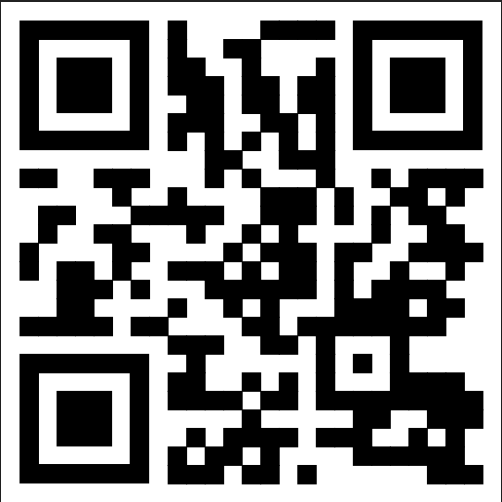
Assessment is an integral part of the learning process, and it comes in different forms. The two main types of assessment are summative assessment and formative assessment. They are both used to evaluate students’ learning progress and achievement, but they serve different purposes.
Understanding Assessment Types
Before delving into the differences between summative and formative assessments, it’s crucial to understand what each one entails. Assessments are a critical component of the educational process, providing feedback to both students and teachers about the effectiveness of instruction and learning.
Assessments can take many forms, from written exams to oral presentations, from multiple-choice questions to essays. The type of assessment used depends on the learning objectives, the subject matter, and the desired outcomes.
What is Summative Assessment?
Summative assessment is a high-stakes evaluation that typically comes at the end of a unit, semester, or academic year. It aims to measure what students have learned and to assign a grade or score to their performance. Summative assessments provide a snapshot of student achievement at a particular point in time and are often used to determine grades, placement, or eligibility for advancement.
Examples of summative assessments include final exams, standardized tests, and end-of-year projects. These assessments are typically scored or graded using a rubric or set of criteria that measures the quality and completeness of the work.
Summative assessments are often used to evaluate the effectiveness of instruction, curriculum, and programs. They can provide valuable data to administrators and policymakers to make decisions about resource allocation and program improvement.
What is Formative Assessment?
Formative assessment, on the other hand, is an ongoing evaluation that happens throughout the learning process. It helps students monitor their progress and provides teachers with feedback to guide instruction. Formative assessments come in various forms, such as quizzes, class discussions, peer evaluations, and self-assessments.
Formative assessments are designed to support learning by providing feedback that can be used to adjust instruction and improve student outcomes. They are often low-stakes, meaning that they do not carry significant weight in the final grade or evaluation. Instead, they are used to inform instruction and provide students with opportunities to practice and improve their skills.
Formative assessments can be used in a variety of ways, from informal check-ins to more structured assessments that are aligned with learning objectives. They can provide valuable feedback to both students and teachers, helping to identify areas of strength and weakness and guiding instructional decisions.
Overall, both summative and formative assessments play important roles in the educational process. While summative assessments provide a final evaluation of student learning, formative assessments support ongoing learning and improvement. By understanding the differences between these types of assessments, educators can make informed decisions about how to best support student learning and achievement.
Key Differences Between Summative and Formative Assessments
Assessments are an essential part of the learning process. They help evaluate students’ understanding of concepts and their progress toward learning goals. Although both types of assessments evaluate students’ learning progress, the way they do it is different. Here are the key differences between summative and formative assessments:
Purpose and Goals
Summative assessments aim to measure students’ overall achievement at the end of a learning period. They provide a summary of what students have learned, help differentiate between high and low achievers, and inform grading and reporting decisions. Summative assessments are often used to determine whether students have met the standards set by the curriculum.
Formative assessments, on the other hand, focus on guiding students’ learning process. They provide feedback on how to improve, help set learning goals, and shape instructional strategies. Formative assessments are designed to help teachers and students identify areas that need improvement and adjust their learning strategies accordingly. They are used to support learning and inform teaching.
Timing and Frequency
Summative assessments typically occur once at the end of a unit, semester, or academic year. They serve as a final evaluation of students’ overall progress. Summative assessments are usually high-stakes tests that are used for grading and reporting purposes. They are often stressful for students and can be a source of anxiety.
Formative assessments, on the other hand, happen throughout the learning process and are ongoing. They provide instantaneous feedback on students’ understanding of concepts and their progress towards learning goals. Formative assessments can be informal, such as classroom discussions, or formal, such as quizzes and tests. They allow teachers to adjust their teaching strategies and provide targeted support to students who are struggling.
Feedback and Grading
Summative assessments usually provide a final grade or score. The grade reflects students’ overall achievement and is used for reporting purposes. Feedback is often limited and may not impact learning. Students may not receive feedback until after the assessment is completed, which can make it difficult for them to improve their performance.
On the other hand, formative assessments provide frequent feedback that helps students understand how they are progressing toward their learning goals. Feedback helps students identify areas that need improvement and guides next steps in learning. Formative assessments are designed to support learning and provide opportunities for students to improve their understanding of concepts.

Assessment Methods
Summative assessments are often standardized tests, exams or assessments that have a set of predetermined questions to measure a specific area of knowledge. Summative assessments are usually objective and have a clear right or wrong answer. They are designed to evaluate students’ knowledge and understanding of a specific topic or subject area.
Formative assessments come in various forms and allow teachers to use different types of strategies to determine students’ understanding of class material. These include quizzes, observations of classroom behaviors, and feedback from students themselves. Formative assessments are designed to be flexible and can be adjusted to meet the needs of individual students. They are often subjective and allow for a range of responses that reflect students’ understanding of a topic.
In conclusion, both summative and formative assessments are important tools for evaluating students’ learning progress. While summative assessments provide a snapshot of students’ overall achievement, formative assessments are designed to guide students’ learning process and support their progress toward learning goals.
Advantages and Disadvantages of Summative Assessments
Pros of Summative Assessments
Summative assessments are widely used in educational institutions to evaluate a student’s overall knowledge and understanding of a particular subject. These assessments are designed to measure the extent to which students have learned the material covered in a specific course or unit. There are several advantages of summative assessments that make them an essential tool for measuring student learning.
One of the most significant advantages of summative assessments is that they provide a snapshot of overall learning. They give students a clear indication of their strengths and weaknesses, which can help them identify areas where they need to focus more attention. Additionally, grade results can be used for college admissions or employment applications, making them an important tool for students to showcase their academic abilities.
Summative assessments are also often aimed at curricular and grade-level standards, which facilitates a broader view of how students are progressing in their academic careers. This broader view allows educators to identify areas where students may be struggling or where they may need additional support to succeed.
Cons of Summative Assessments
While there are many advantages to using summative assessments, there are also some disadvantages that need to be considered.
One of the primary disadvantages of summative assessments is that they limit feedback to the end of a learning period. They do not offer the instant feedback required by students to make effective changes and improvements in their learning patterns. This lack of immediate feedback can be frustrating for students who are looking to improve their performance and may lead to a lack of motivation.
Summative assessments can also be a poor indicator of real proficiency since students’ performance may be affected by various external factors such as stress, anxiety, or sleep patterns. This means that students who may be proficient in a subject may not perform as well on a summative assessment due to external factors that are beyond their control.
Another disadvantage of summative assessments is that they may not accurately measure a student’s ability to apply what they have learned. These assessments are often focused on memorization and recall of information, rather than on the application of that knowledge to real-world situations.
Despite these disadvantages, summative assessments remain an important tool for measuring student learning and evaluating the effectiveness of educational programs. By understanding both the advantages and disadvantages of summative assessments, educators can make informed decisions about how to best use these assessments to support student learning.
Advantages and Disadvantages of Formative Assessments
Formative assessments are an essential part of the learning process. They provide teachers and students with valuable insights into the student’s understanding of the material. While there are both advantages and disadvantages of formative assessments, they remain a critical tool for teachers to help their students learn and grow.
Pros of Formative Assessments
One of the most significant advantages of formative assessments is that they provide an ongoing evaluation of student’s learning. Unlike summative assessments, which are typically given at the end of a unit or course, formative assessments are given throughout the learning process. This ongoing evaluation allows teachers to monitor student progress and adjust their teaching methods to meet the needs of their students.
Formative assessments also offer frequent feedback that can guide learning, assist in setting learning goals, and identify student needs. By providing students with feedback on their progress, teachers can help them identify areas where they need to focus their efforts and provide additional support.
Another advantage of formative assessments is that they allow teachers the opportunity to determine which students have not mastered the material and address these areas before moving on to other topics. This approach ensures that all students have a solid foundation before moving on to more complex topics.
Cons of Formative Assessments
While there are many advantages to formative assessments, there are also some disadvantages that teachers need to consider. One of the main disadvantages is that formative assessments can be time-consuming, requiring extensive preparation, and in some cases, instant feedback to be effective.
Additionally, some students may find receiving constant feedback to be overwhelming and negatively affect their performance due to lack of confidence or discouragement. Teachers need to be aware of this and provide support to students who may be struggling.
Another potential disadvantage of formative assessments is that they may not accurately measure a student’s understanding of the material. This is because formative assessments are typically designed to be low-stakes and may not be as comprehensive as summative assessments.
Despite these disadvantages, formative assessments remain an essential tool for teachers to help their students learn and grow. By providing ongoing evaluation and feedback, teachers can help their students achieve their full potential.
Combining Summative and Formative Assessments for Effective Learning
Balancing Assessment Types
While summative and formative assessments come with their own benefits, combining the two can create a comprehensive evaluation system that provides students with reliable feedback, frequent feedback, and learning progression. Teachers can use both types of assessments intentionally, with summative assessments coming towards the end of a unit, semester, or academic year, and formative assessments offered throughout the learning process.
Strategies for Integrating Assessments
One of the effective ways to integrate summative and formative assessments is to combine traditional assessments with alternative assessments. Alternative assessments, like project work and presentations, allow students to work in a more autonomous or collaborative way, giving them the flexibility and feedback opportunities they need to effectively improve their skills and knowledge base over time.
Examples of Combined Assessment Approaches
Examples of combining summative and formative assessments include having regular quizzes or tests to measure mastery, formative feedback via classroom observations, peer evaluations, and self-assessments throughout the learning process. Additionally, portfolio-based assessments can be used mid-point between summative exams. The portfolio structure allows students to reflect deeply on their learning and shows growth throughout the learning process.
Conclusion
Summative assessments and formative assessments are both essential to the learning process, and each serves different purposes. By combining them effectively, teachers can create a comprehensive evaluation system that provides students with valuable feedback, frequent assessments, and guides their learning journey from start to finish.



